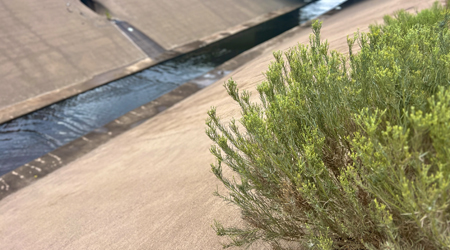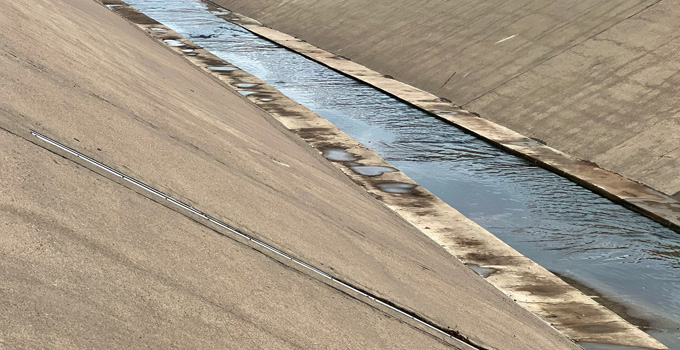Arroyos and ditches are never a safe place to be when it starts raining in the greater area, but they become especially dangerous during “monsoon season,” which typically runs from mid-June through the end of September.
“I've had the unfortunate experience over several years here, working in the emergency department, receiving patients and working alongside our agency partners during flash flood events,” said Drew Harrell, MD, DiMM, FAEMS, faculty in The University of New Mexico Department of Emergency Medicine and one of the UNM Emergency Medical Service (EMS) Consortium physicians.
“Every year during the monsoon season, we unfortunately see individuals who find themselves stuck in the arroyos with flash floods and are rescued—or more unfortunately, individuals who die from those flood events and become body recoveries in the metropolitan area.”

Harrell said anyone who is in the wrong place at the wrong time can get swept away, and his team typically treats about half a dozen patients who are either rescued or manage to escape floodwaters each year.
“Most individuals who have been caught in recent events, were homeless and living in areas that provided shelter,” he said. “These areas are really high risk for flash flood events, as are any of the drainage canals and underground passages that channel water, and those individuals find themselves overrun very quickly.”
Harrell explained that a full y grown person can be knocked off their feet by only six inches of water. A foot of water is all it would take to move most passenger cars and a full-sized SUV can be pushed aside by only two feet of water, “and maybe drag it off down the road and into an area where you're no longer able to be rescued,” he said.
Fortunately, there are things you can do to avoid the dangers that accompany flash floods.
How to prevent an emergency situation:
1. Avoid arroyos and ditches year-round
Harrell encourages people to avoid low-lying areas that are high-hazard for flash floods.
“Any of the metropolitan flood control arroyos throughout the city are the primary spots we don't need people in, any time of the year,” he said.
Lightning and thunder are good indicators that it is time to leave a dangerous area.
2. Be vigilant
Whether you’re in or outside city limits, Aaron Reilly, DO, faculty in the UNM Department of Emergency Medicine and UNM International Mountain Medicine Center, said it’s important to be aware of your immediate surroundings.
“Especially when you are out in places like Cabazon or BLM land, there are a lot of arroyos and drainage areas that could become a potential issue.”
3. Watch the weather
Reilly said it’s important to be aware of weather conditions. It doesn’t have to be raining where you are for an arroyo to become unsafe.
It could be raining 10 to 15 miles away, and as all that water collects, it can come on pretty fast and without much notice.
4. Do not drive during a flash flood
Harrell said never drive through running water because the water may be deeper than you realize.
What to do if you are caught in floodwaters:
If you do find yourself in an emergency situation, both Harrell and Reilly said to position your body so you are facing downstream in the same direction as the water is moving and try grabbing onto whatever you can around you to pull yourself to safety.
“Try to keep your head above water with your feet pointed downstream and try to get to a place where you can get yourself out,” Harrell said. “In terms of keeping your feet up out of the waters, you're less likely to get hung up on things that might be in the arroyo or in the river. It’s very important not to get hung up because then you end up drug under the water by the continuing passage of water.”
Looking downstream will allow you to see potential rescue personnel, who strategically place themselves in areas where they will be most likely to reach a victim.
If you see somebody else caught in fast-moving water, both Harrell and Reilly said to stay on dry land and call for help.
“It is often a tough situation, where we find that one victim or casualty becomes more than one casualty because people are trying to help—especially if it’s a child or a friend—but oftentimes end up getting themselves in trouble or caught as well,” Reilly said. “If you become a casualty yourself, you can’t help anybody.”
